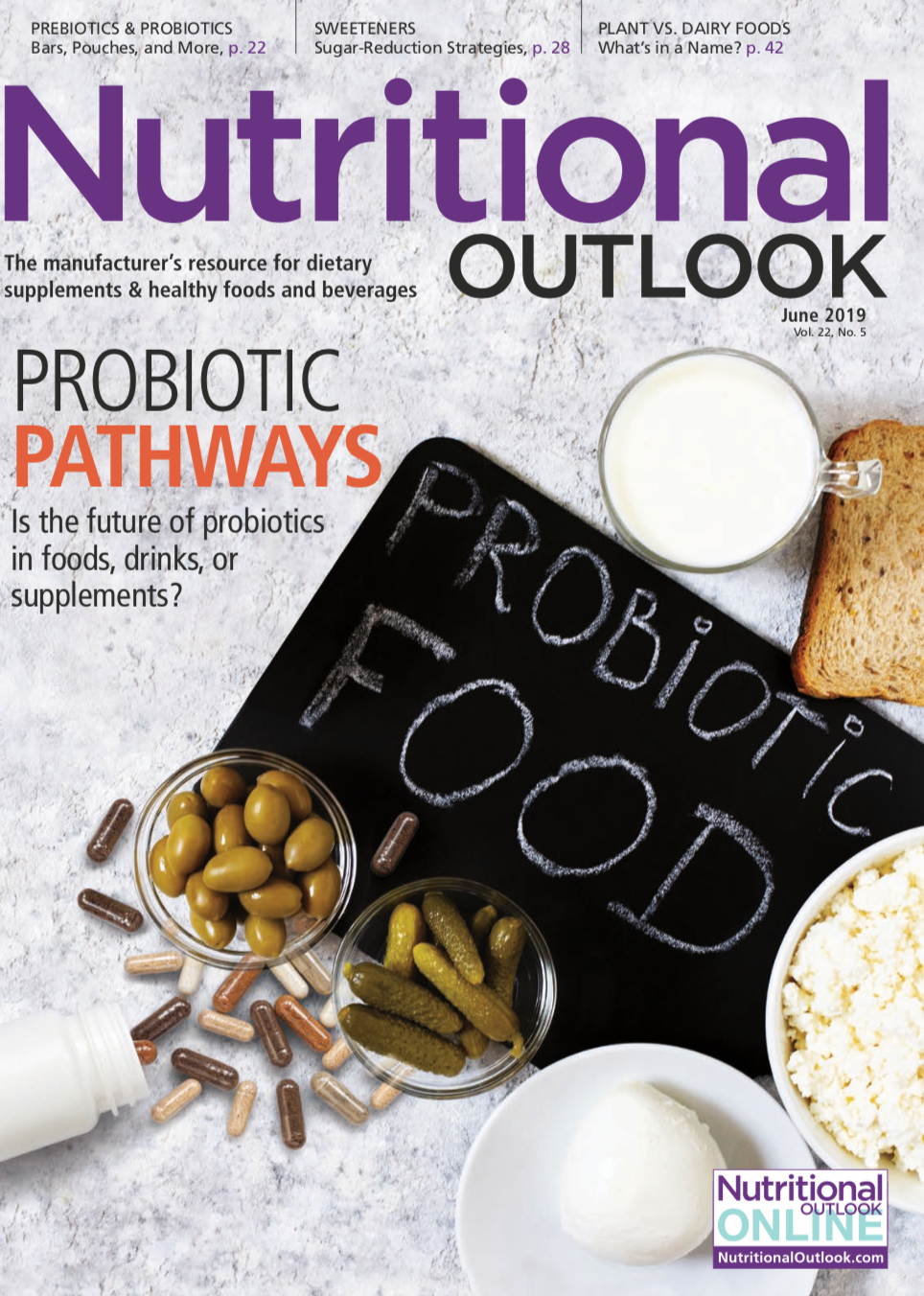Reducing sugar: Blending natural sweeteners for optimized performance
Today’s sweetener suppliers and manufacturers have developed a number of creative solutions for clean-label sugar reduction. Much of this work involves finding the right combination of high-intensity sweeteners, and bulking agents, to replicate the flavors and textures we get with sucrose.
Image Courtesy of Beats_.com - Stock.Adobe.com

Everyone loves sugar. Its flavor and performance are responsible for the eating experience we’ve come to expect from baked goods, confections, and beverages. Excessive sugar consumption, however, has plagued our society with health problems such as obesity and metabolic disease, and this is what is motivating consumers today to drastically cut their intake of sugar. According to proprietary consumer research from ingredient supplier Kerry (Beloit, WI) conducted in 2018, 46% of consumers strongly want to reduce their consumption of sugar, and 71% read the sugar content on ingredient labels.
In fact, according to USDA data, between 2000 and 2016, there was a 17% decline in daily consumption of sweetening agents such as refined sugar and high-fructose corn syrup. According to the group The Consumer Goods Forum1, in 2017, 68% of companies reported reducing sugar, a 12% increase compared to 2016. Kerry reports that, as a way to manage sugar consumption, 28% of its survey respondents are opting for reduced-sugar foods and beverages, and 19% are switching to alternative sweetening agents.
Such movement is also impacting the product claims companies are making. For instance, the number of “no added sugar” claims on products grew 2.6% in 2018 compared to the year prior, and the number of “low/no/reduced sugar” claims grew 45% in 2017 compared to 2012, according to data from Mintel2. The number of “no artificial sweeteners” claims also grew 4.4% in 2018 compared to the year before, according to Nielsen data cited in the Kerry report3, showing that consumers not only want less sugar, but want alternatives that are clean label and natural.
If a product calls for less sugar, but the same sweetness, a natural, high-intensity sweetener such as stevia can solve the sweetness issue; however, replicating sugar’s functionality is no easy task.
“Emerging sweeteners are always compared and evaluated against [sugar’s] performance,” says Akshay Kumar Anugu, PhD, associate, global sweetener development, for Ingredion (Westchester, IL).
Anugu explains that replacing sugar with high-potency sweeteners is challenging for many reasons, such as the fact that differences in the binding ability of sweeteners at T1R2/T1R3 receptors, which are humans’ receptors for sweet flavors, can dictate different flavor delivery and mouthfeel properties, depending on the sweetener.
Says Anugu: “Sucrose not only provides sweet taste, but also imparts functional properties such as bulking/mouthfeel. In baked goods, sucrose increases the protein denaturation and starch gelatinization temperatures, acts as a tenderizer by retarding and restricting gluten formation, and also contributes to the volume. In ice cream, sucrose influences freezing point and controls ice crystal formation. In bars, it controls hardness and maintains microbial and physical stability during the shelf life.”
Also, when you ask consumers, not all consider sugar a bad word. In fact, in surveying consumer perceptions, Kerry found that 59% prefer sugar, compared to the 22% who prefer stevia. So, even as consumers may want to limit their consumption of sugar, they also have a positive opinion of it as a sweetener because it is a familiar ingredient.
The challenge now for suppliers and manufacturers is to devise products which give consumers what they want in terms of sugar reduction as well as flavor, all while using alternative ingredients. Their hope is that consumers will begin to recognize products like stevia and choose them because they like the taste.
Given these challenges, today’s sweetener suppliers and manufacturers have developed a number of creative solutions for clean-label sugar reduction. Much of this work involves finding the right combination of high-intensity sweeteners, and bulking agents, to replicate the flavors and textures we get with sucrose.
Stevia
The most ubiquitous natural sweetener on the market today is stevia (Stevia rebaudiana)-more specifically, the steviol glycoside Rebaudioside A (Reb A).
Stevia is significantly sweeter than sugar and is therefore very effective at clean-label sugar reduction, particularly in beverage applications. “Early on, stevia was first embraced by manufacturers in product categories that were on the front lines of the sugar-reduction fallout-chiefly beverages, including juices, flavored waters, and sodas,” explains Andy Ohmes, global director of high-intensity sweeteners, Cargill (Minneapolis, MN). “Stevia leaf extracts have become so popular in these categories that close to one in four global beverage launches now contains stevia-based sweeteners.”
Beverages are a big sugar-reduction target because carbonated soft drinks and juices are notoriously high in sugar. In fact, in Kerry’s consumer survey, carbonated soft drinks were perceived to contain the highest sugar content. That means that consumers will either switch to unsweetened beverages or seek out alternatives, which they hope will be comparable to the real thing.
Meeting this expectation poses some challenges where stevia is concerned. Alone, stevia’s most prominent steviol glycoside, Reb A, will not help formulators eliminate sugar entirely because it has a bitter aftertaste and affects sensory characteristics such as mouthfeel.
At lower sugar-reduction levels, Reb A isn’t as problematic. “Formulators were able to achieve 30%-50% sugar reduction with Reb A in several beverage applications without impacting taste,” says Anugu. “However, Reb A can impart undesirable sensory characteristics, especially above 50% sugar replacement, limiting its application.”
For this reason, the stevia industry’s push to commercialize other, minor steviol glycosides such as Reb M and Reb D, which sidestep some of the undesirable tastes and sensory characteristics of Reb A, has the potential to make a huge impact on sugar reduction. Most often, when aimed at lowering a product’s sugar profile today, these minor glycosides are used either in combination with Reb A or with other steviol glycosides.
Cargill’s ViaTech stevia sweetener portfolio, for example, allows for up to 70% sugar reduction, based on the company’s ability to pinpoint ideal glycoside ratios. “Part of what sets the ViaTech portfolio apart from other stevia sweeteners is Cargill’s proprietary taste-prediction model, which can precisely predict which combination of steviol glycosides deliver optimal taste and sweetness,” explains Ohmes.
“We have found that using Reb D and Reb M as sweetness modulators in very small amounts in tandem with [Reb A sweeteners] RA99 or RA98 works very, very well in masking off-notes while maintaining high intensity,” explains Thom King, president and CEO of Icon Foods (Portland, OR). He adds that even Reb D and Reb M are not without their own off-notes, making combining the steviol glycosides ideal.
Combining a variety of different steviol glycosides is also more cost effective for several reasons. Reb M and Reb D are called minor steviol glycosides because they are present in lesser concentrations in stevia plants, requiring more work and starting material to extract workable amounts. This translates to a higher price, but as many firms are now pointing out, continuing technological advancements are making the minor steviol glycosides more scalable.
Cargill’s newest stevia sweetener, EverSweet, is a minor steviol glycoside sweetener containing Reb M and Reb D produced through fermentation, without the typical leaf extraction.
Another firm, PureCircle (Chicago, IL), has begun selectively breeding stevia plants so that they have a higher Reb M and Reb D content, compared to conventional stevia plants. “As to cost effectiveness, recent PureCircle advances enable us to significantly boost production of high-grade stevia sweeteners like Reb M,” states PureCircle CEO Maga Malsagov. “This means we can supply stevia sweeteners in amounts that customers need as they expand use of stevia ingredients. Depending on amounts purchased and terms of purchase, companies buying Reb M from PureCircle will find the cost of using it to sweeten a beverage or food equivalent to their cost of using sugar to achieve the same level of sweetening.” This has opened stevia up to greater possibilities in other applications, such as baked goods, ice cream, sauces, and other growth categories, says Malsagov.
Bulk Sweeteners
Stevia has a lot of name recognition and a positive connotation among consumers looking for low-glycemic and clean-label products. However, stevia can present notable limitations beyond undesirable aftertaste, such as limitations in mouthfeel and bulking.
Of stevia, Anuga says: “Sensory challenges include creating a sucrose-like sweet response (time intensity and temporal), eliminating non-sucrose taste profile (bitter, astringency, licorice, etc.), and adding back mouthfeel. Processing challenges include solubility, dispersion, foaming, stability (processing/storage), shelf life, etc.”
For these reasons, “Up to this point, there has been a more limited use of stevia in the bakery category,” explains Wade Schmelzer, principal food scientist, Cargill. “Cakes and cookies, for instance, are indulgent products, which consumers often associate as a reward for their other dietary choices. Sugar reduction in these types of applications is more complex, since sugar is highly functional, impacting not only taste, but texture, structure, and color.”
Schmelzer says that replicating the texture of full-sugar bakery products often requires a combination of bulking agents, such as erythritol and fibers, “potentially coupled with starches and hydrocolloids.” Bulk sweeteners such as the polyol erythritol and the rare sugar allulose can impart the desirable functional properties stevia cannot.
“Bulking sweeteners can produce viscosity and mouthfeel very similar to sugar,” explains King. The most popular combination, says King, is stevia and erythritol, or even stevia, monk fruit, and erythritol.
Erythritol offers a number of functions across platforms, says Ravi Nana, polyols technical service manager, Cargill. In beverages, erythritol provides mouthfeel, which decreases when sugar decreases. In frozen dairy products, it provides freezing-point depression, and in bakery applications, it contributes to bulk and enhances texture.
“For example, in ice cream, sugar is what lowers the freezing point and prevents the formation of large ice crystals, creating the smooth, silky texture expected of a premium ice cream,” says Nana. “Because of its small molecular size (one-third that of sugar), erythritol can fill that void, providing a threefold freezing-point depression factor. That higher effect on freezing-point depression helps soften reduced-sugar ice creams, creating the scoopable texture consumers crave.”
King says the combination of erythritol, stevia, and monk fruit is ideal for sweetening bars and powdered drink mixes, particularly 100-mesh or fine-powder formats that allow for immediate dispersion into solutions or formulas.
King also points to the benefits of allulose. “The combination of allulose and stevia makes for a perfect plug-and-play sweetening system for baked goods. Stevia does not participate in the Maillard reaction, nor does it brown or activate leavening. Allulose, since it is a saccharide and participates in Maillard, works wonderfully, and the added sweetness of stevia makes it a very, very viable replacement for sugar in sweet baked goods and desserts.”
Another advantage of allulose is a recent draft guidance published by FDA that states allulose can be excluded from the added-sugar statement on the Nutrition Facts label.
Fiber
The use of naturally derived fibers such as inulin from chicory root fiber has become another way to reduce sugar while providing important textural properties, especially when used in combination with other sweeteners.
“We have found inulin very useful in baked goods to be used as a fat emulator, with the added benefit of a fiber label claim,” says King. “It pairs very well with stevia. It participates, albeit very slightly, in Maillard since, by definition, inulin is classified as a fructan, which is a polymer of fructose molecules with a short chain length, known as fructooligosaccharides. We have found that the allulose, stevia, and monk fruit combination is much more effective in baked goods.”
Cargill touts using its Oliggo-Fiber inulin. “While we can often replace sugar’s sweetness with a high-intensity sweetener like stevia, it won’t make up for the loss of bulk or functionality. For those properties, we often opt for Zerose erythritol, a natural, zero-calorie bulk sweetener, and naturally sourced Oliggo-Fiber chicory root fiber,” says Tim Christensen, senior food technologist, R&D, bakery applications, Cargill. “Together, these ingredients help deliver the mouthfeel consumers expect. In many bakery applications, the combination of stevia, erythritol, and chicory root fiber can successfully replace the functionality of sugar, keep cost-of-use in check, and deliver on consumer preferences.” This combination (stevia, erythritol, and chicory), says Christensen, makes it possible to achieve a 15%-20% sugar reduction in cookies, and a 20%-50% sugar reduction in cakes and muffins, with limited effect on overall product performance.
The use of inulin fiber also allows for additional claims in major growth categories. “[Chicory root fiber is] a product that can be used in some organic formulations, depending on inclusion levels. It’s gluten free. We see now with the keto and paleo trends that incorporation of fiber has taken off as well,” explains Taylor Halstead, product line manager; specialty carbohydrates; starches, sweeteners, and texturizers business; Cargill. “It’s really just compatible with a number of the label claims that customers want to make to begin with.”
A United Front
There is no one-size-fits-all solution for sugar reduction. Optimizing flavor and texture means tailoring a combination of different sweeteners to a specific product because each product brings its own challenges. It’s clear that consumers want reduced-sugar options, and delivering these options is now more possible than ever.
References:
- Deloitte. “The Consumer Goods Forum: Annual Health & Wellness Progress Report, 2017” https://www2.deloitte.com/content/dam/Deloitte/global/Documents/Consumer-Business/cb-2018-health-wellness-report.pdf
- Mintel. “Trends in sugar, sugar reduction, and sweeteners: Prepared for the 34th annual Sweetener Symposium.” https://sugaralliance.org/wp-content/uploads/2017/08/lynn-dornblaser.pdf
- Nielsen xAOC Sales Units. 52 weeks ending June 16, 2018. Analyzed among 207 billion units.

Prinova acquires Aplinova to further increase its footprint in Latin America
April 7th 2025Prinova has recently announced the acquisition of Brazilian ingredients distributor Aplinova, which is a provider of specialty ingredients for a range of market segments that include food, beverage, supplements, and personal care.



















